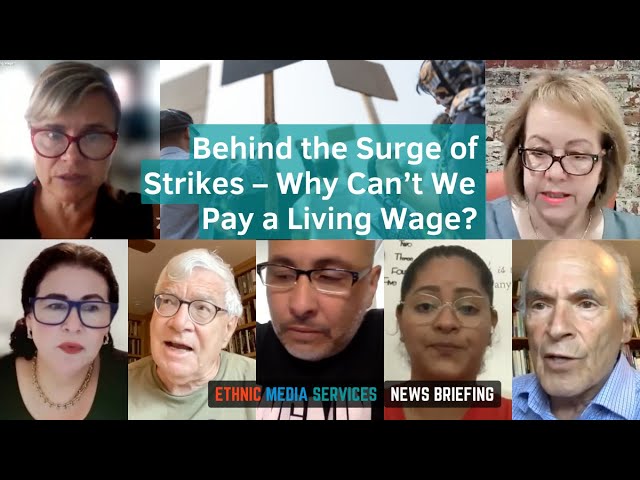The labor movement in the United States is having an unusually active moment, with as many as four high-profile strikes possible and a level of coordination among separate unions that experts say has been lacking in recent years.
Major strike activity increased by almost fifty percent in 2022, according to the U.S. Labor Department. And the Economic Policy Institute says over 120,000 workers were involved in major work stoppages last year. Low unemployment has also given workers more leverage to organize and even strike.
The Hollywood Screenwriters Union, Screen Actors Union, hotel workers, catering workers, etc. formed the largest strike wave since the 1970s this summer; workers in the steel and automobile industries also threatened to join the ranks of strikes in late summer and early autumn this year. Wages and benefits could not keep up with rising housing prices and inflation were the reasons and demands of the strike.
Lucero Ramirez, A hotel worker participating in walkouts said she is responsible for cleaning six rooms every day, because the floors are all marble, the carpets are imported from Italy, and there are additional requirements for hotel cleaning, including no fingerprints on the furniture. Her two-week check is $1,500, about $3,000 a month, but her rent is $1,100 a month. She wants at least a $5 increase per hour.
Jorge Rivera, a screenwriter who has worked in Hollywood for many years, is also on strike this time. He said the last time Hollywood screenwriters went on strike was 60 years ago over health insurance and a profit-sharing business model. However, the profits of the TV industry mainly come from TV advertisements. As long as the TV stations sell the advertising time, playwrights and other creators can get a share; DVD sales, creators also get dividends, so we can get a stable income and can afford medical insurance and various living expenses.
Nelson Lichtenstein, director of the Center for Labor and Democracy Studies at UC Santa Barbara, said workers appear to be in an advantageous position to strike because of a tight workforce, but many workers do not have union support. For example, the hotel service industry in the Los Angeles area has a very strong service union, but only 6% of the workforce is unionized. The steel and auto industries plan to join strike action, but also lack unionization.
Ada Briceño, Co-President, UNITE HERE Local-11 said that after the epidemic, the profit of the hotel industry has exceeded the pre-epidemic level, but the workers are struggling because of housing prices and inflation. The appeal is simple: have better wages, basic pension insurance and medical insurance.
Vidya Sethuraman
India Post News Service







